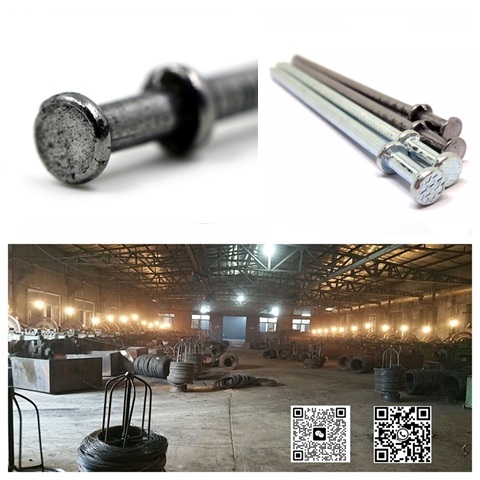Duplex nails specifications:
| Size | Gage No. |
Length Overall in. |
Length under Lower Head in. |
Diam Top Head in. |
Diam Lower Head in. |
| 6d | 11-1/2 | 2-7/64 | 1-3/4 | 3/16 | 17/64 |
| 8d | 10-1/4 | 2-5/8 | 2-1/4 | 15/64 | 9/32 |
| 10d | 9 | 3-3/16 | 2-3/4 | 1/4 | 5/16 |
| 16d | 8 | 3-1/2 | 3 | 9/32 | 11/32 |
| 20d | 6 | 4-1/64 | 3-1/2 | 5/16 | 3/8 |
| 30d | 5 | 4-37/64 | 4 | 21/64 | 7/16 |
What makes duplex nails ideal for temporary structures?
Duplex nails are often misunderstood as merely another type of nail. However, their unique design and functionality make them particularly suitable for temporary structures. These nails are commonly used in construction projects where the ability to dismantle or adjust the structure without causing damage is crucial. Understanding why duplex nails are ideal for temporary structures sheds light on their specialized use and importance in various projects.
Why Are Duplex Nails Perfect for Temporary Structures?
Duplex nails feature a double-headed design, which sets them apart from standard nails. This design includes a secondary head positioned slightly below the primary head. This seemingly simple feature offers several advantages:
- Easy Removal: The secondary head provides a convenient grip point for nail pullers or hammers, making the nail easy to remove without damaging the material. This is essential for temporary structures that need to be disassembled and reused.
- Secure Hold: Despite their easy removal, duplex nails offer a firm hold. The primary head ensures the nail stays in place, while the secondary head prevents it from being driven in too deep, maintaining the structural integrity.
- Reusability: Duplex nails can be reused multiple times due to their design. This is both cost-effective and environmentally friendly, reducing waste in temporary construction projects.
One common challenge when using duplex nails in temporary structures is ensuring they are driven in correctly. To address this, follow these steps:
- Position the Nail: Align the nail with the material, ensuring the secondary head remains visible above the surface.
- Drive the Nail: Use a hammer to drive the nail in until the primary head is flush with the material. The secondary head should remain accessible.
- Check Stability: Ensure the nail is secure and the structure is stable. If adjustments are needed, the nail can be easily removed and repositioned.
Another technique to maximize the benefits of duplex nails is to pair them with materials that can withstand repeated assembly and disassembly. For example, using high-quality plywood or modular components can enhance the durability of temporary structures.
Post time: Sep-22-2025
